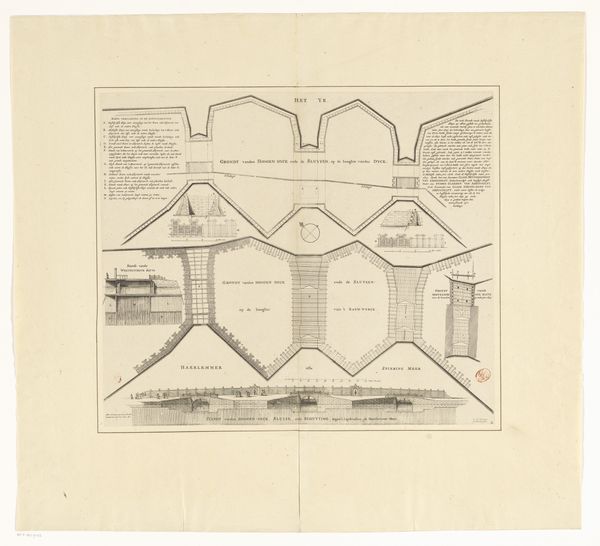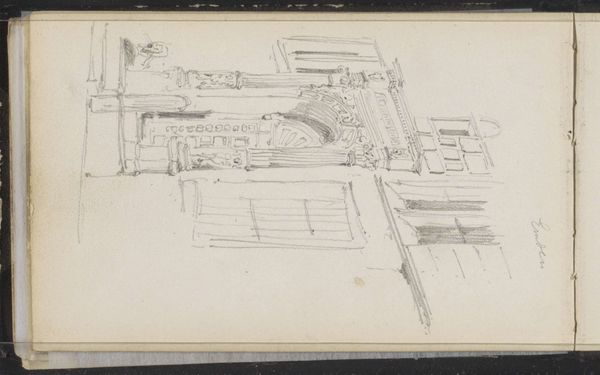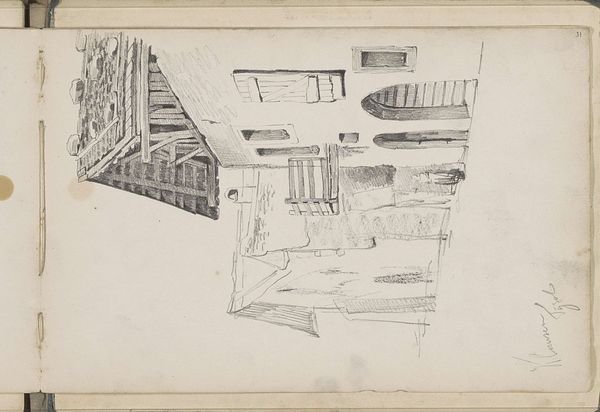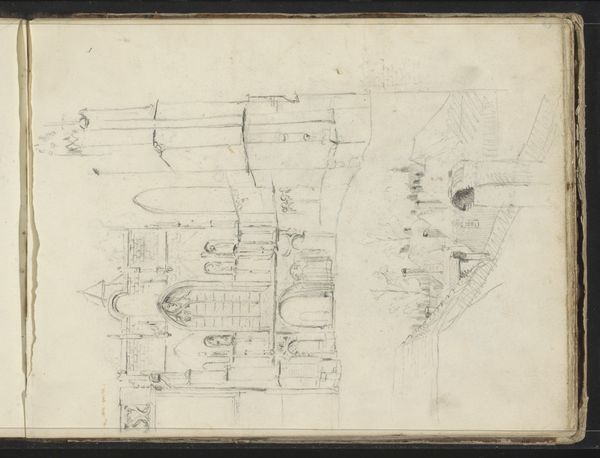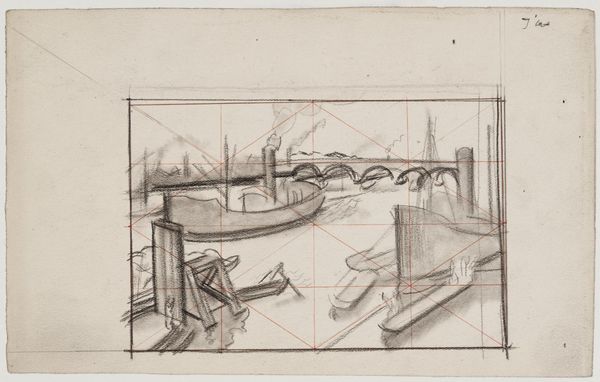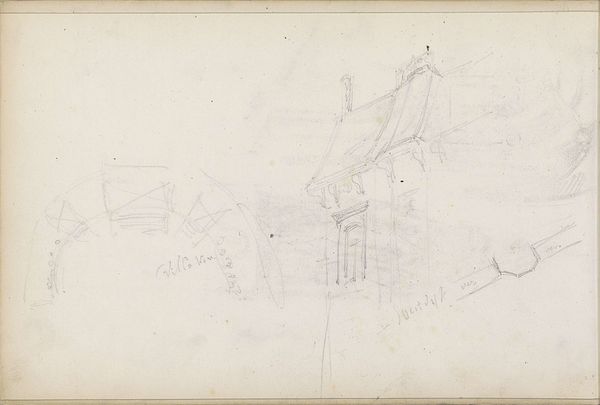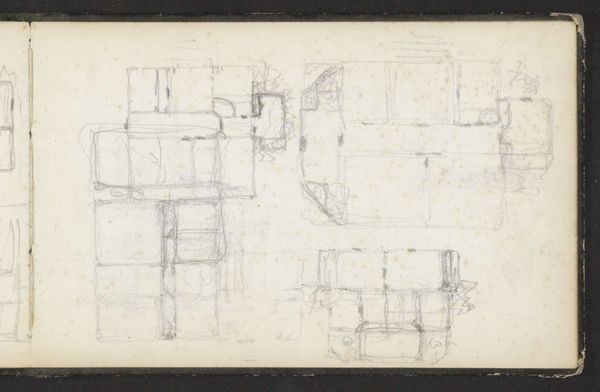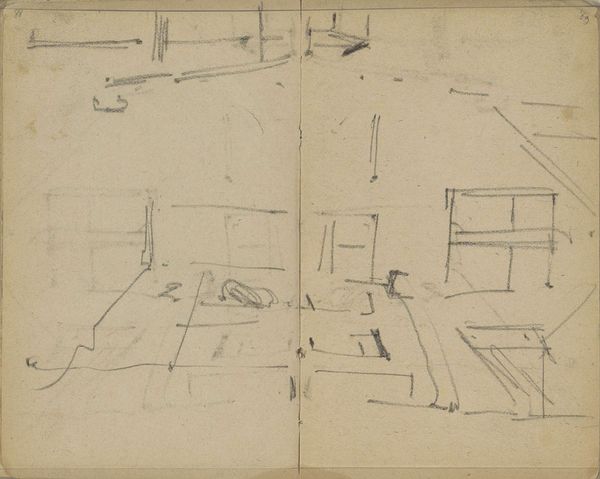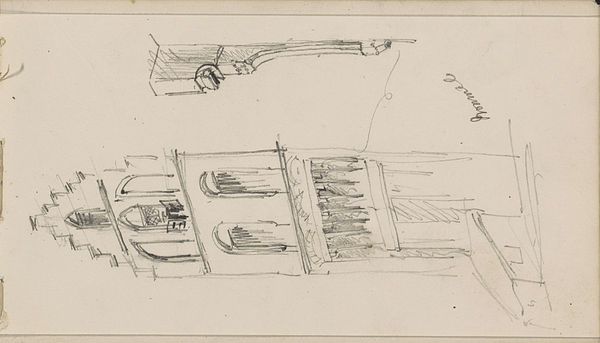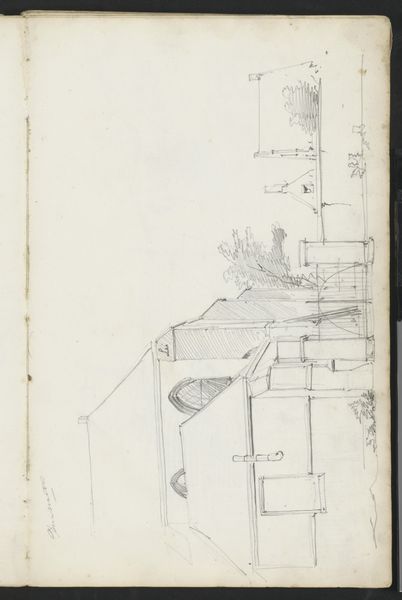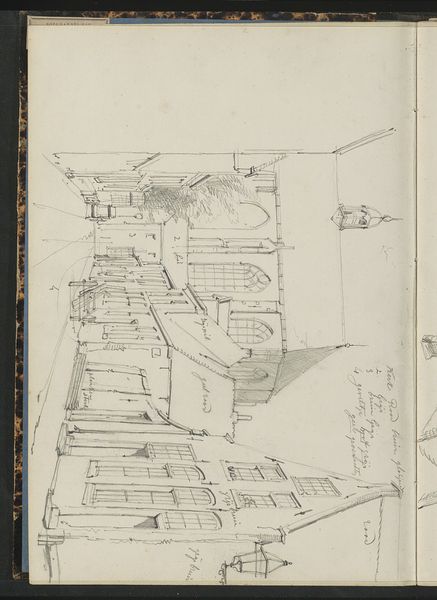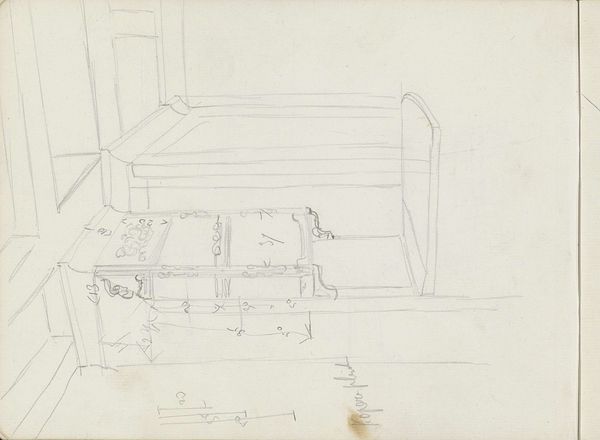
Doorsneden van verschillende Hollandse schansen en dijken, 1629 1631
0:00
0:00
willemhondius
Rijksmuseum
drawing, print, etching, paper, architecture
#
architectural sketch
#
drawing
# print
#
etching
#
landscape
#
etching
#
paper
#
geometric
#
architectural drawing
#
architecture
Dimensions: height 251 mm, width 334 mm
Copyright: Rijks Museum: Open Domain
Curator: Willem Hondius's etching, "Doorsneden van verschillende Hollandse schansen en dijken, 1629," created in 1631 and residing here at the Rijksmuseum, offers a fascinating glimpse into 17th-century Dutch engineering. Editor: It's… surprisingly delicate. Given that it represents fortifications and dikes, I was expecting something bolder, more overtly imposing. Instead, it feels like an architectural drawing, meticulously crafted on paper. Curator: Precisely. This print, with its precise lines and calculated geometry, reveals the crucial relationship between Dutch society and its landscape. These weren’t merely aesthetic exercises; these plans represented life and death in a constant battle against the sea. We see the intersection of societal planning and geographical reality. Editor: I am fascinated by how this etching transcends mere representation, serving as a vital record of technical expertise. The rendering highlights the materials needed: earth, wood, and labor to manipulate water levels. Did Hondius have some connection to a workshop that fabricated these structures? The level of detail suggests firsthand observation, not just theoretical knowledge. Curator: Absolutely. The very existence of this document highlights the crucial role of knowledge dissemination. Creating these kinds of detailed plans and making them available suggests a culture of shared learning, an element key to maintaining Dutch infrastructure. The public understanding of these engineering projects ensured political stability and facilitated civic duty. Editor: Seeing how land usage is represented, there is attention to the process. And how the materials themselves impacted construction and usage: The choice of earth in some, the bolstering wood in others… Hondius documented not just what these structures looked like, but also how they were made and what role that construction process played. The work feels less like a celebration of architecture, but rather, documentation of labor and consumption! Curator: A compelling perspective. What stands out to me is the ambition reflected in the etching's commitment to control and organization, a trait of the Dutch Republic's governing philosophy, broadcast to those beyond the immediate building sites, reinforcing their public role. Editor: Reflecting on the process, there is also Hondius capturing in essence the spirit of Dutch ingenuity and relentless struggle for stability, turning mundane materials like earth and wood into national icons. Curator: Indeed. By preserving a crucial stage in a network that facilitated Dutch dominion over their natural setting, Hondius invites future generations to ponder how such practical art was part of its rich heritage.
Comments
No comments
Be the first to comment and join the conversation on the ultimate creative platform.
